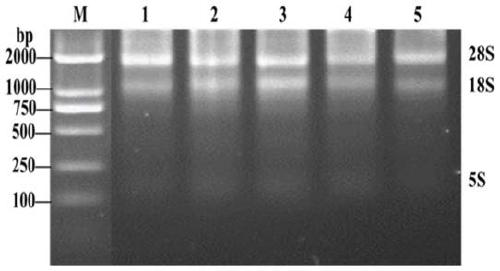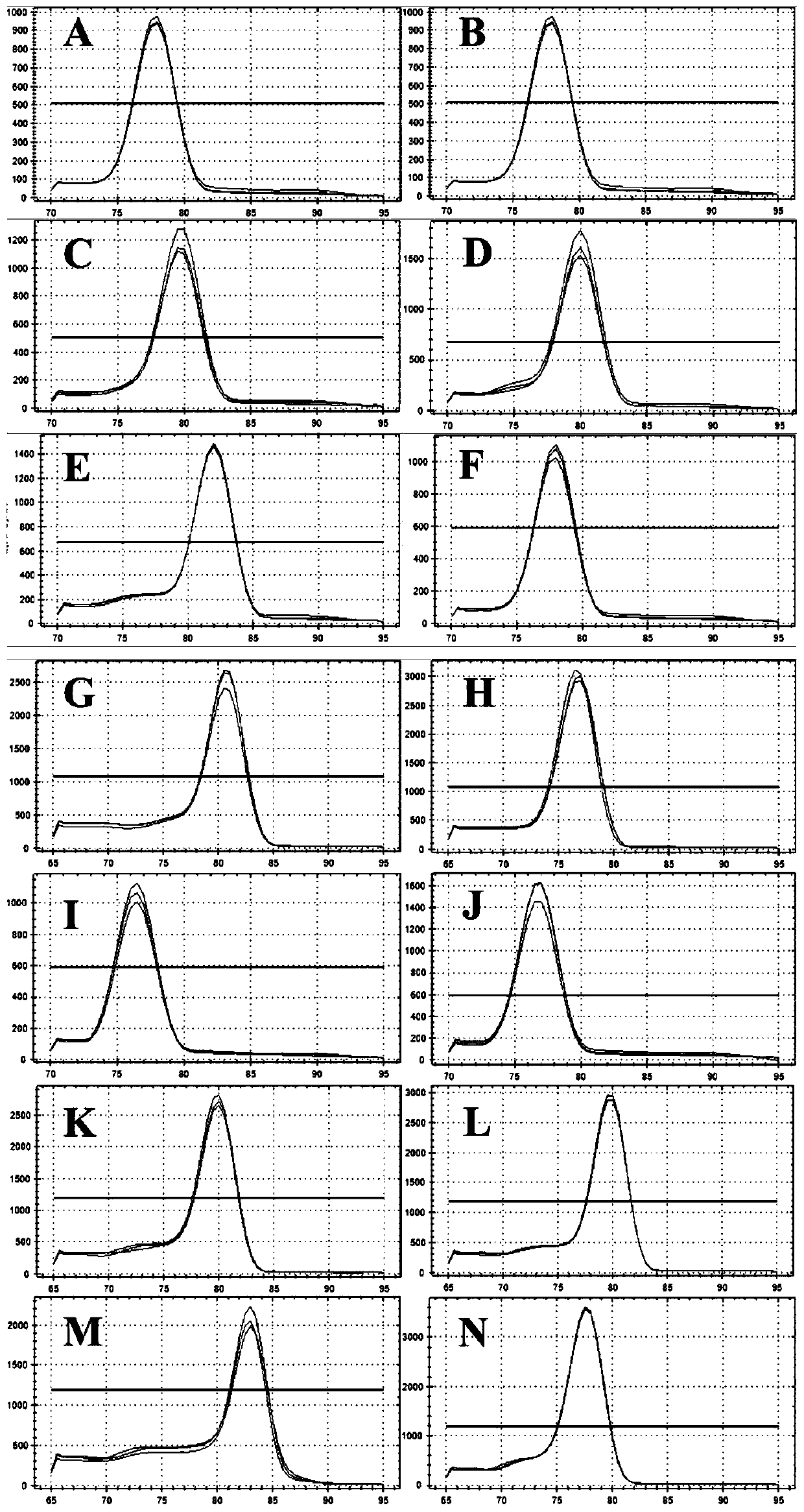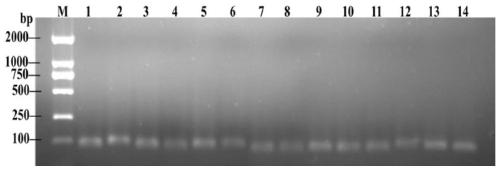Internal reference genes of fluorescence quantitative analysis of candidatus liberibacter asiaticus and application thereof
A technology of citrus huanglongbing and citrus huanglongbing, which is applied in the field of molecular plant pathology and can solve the problems of lack of applicable internal reference genes and the like
- Summary
- Abstract
- Description
- Claims
- Application Information
AI Technical Summary
Problems solved by technology
Method used
Image
Examples
Embodiment 1
[0089] Screening of embodiment 1 internal reference gene
[0090] 1. Experimental method
[0091] 1. Preparation of test samples
[0092] Huanglongbing was inoculated onto plants of different species using the Huanglongbing disease bud grafting technique: October orange (Citrus reticulata Blanco cv.ShiyueJu), pomelo (Citrus maxima), year orange (Citrusreticulata Blancocv.Nian Ju) and lemon (Citrus limon( L.) Burm.F.), 3 biological replicates for each species, and the materials were cultivated under natural conditions in a net room. The leaves of typical symptoms and leaves of healthy plants were randomly collected 3 to 18 months after grafting, and each sample was collected from a different plant. After cutting a part of each leaf and freezing it in liquid nitrogen, store it at -80°C for future use, and store the other part at 4°C for future use.
[0093] 2. DNA extraction and RT-qPCR detection
[0094]Plant tissue DNA was extracted according to the instructions of the OME...
Embodiment 2
[0143] Example 2 A kit for RT-qPCR analysis of citrus Huanglongbing
[0144] 1. Composition
[0145] Includes amplification primers for internal reference genes gyrA and ftsZ, SYBR Green qPCR Master Mix and ddH 2 O; wherein, the nucleotide sequence of the amplification primer of the internal reference gene gyrA is as shown in SEQ ID NO.2~3; the nucleotide sequence of the amplification primer of the internal reference gene ftsZ is as shown in SEQ ID NO.5~6, The primer concentration was 20 μmol / L.
[0146] 2. How to use
[0147] 1. Extraction of total RNA from plant tissue: Take 80mg-100mg of the midrib of each sample, grind it into powder in liquid nitrogen, and extract the plants of each sample with reference to the OMEGA Plant Tissue Total RNA Extraction Kit (OMEGA Abio-tek, Plant RNAKit R6827) Tissue total RNA.
[0148] 2. Total RNA quality detection: 1.0% agarose gel electrophoresis, TBE×5 buffer solution, 130V, 35min; concentration and purity were determined by NanoDro...
Embodiment 3
[0155] Application of embodiment 3 fluorescence quantitative kit and its specificity detection
[0156] In order to further prove the reliability of the internal reference gene, 16S rRNA and gyrA+ftsZ combination were respectively used as internal reference genes to analyze the expression pattern of Las△5313, an important pathogenic gene of H. citri, in leaves of plants infected with HLB.
[0157] 1. Experimental method
[0158] 1. Sample preparation: Take pomelo, Nianju, and tangerine plants grafted with diseased buds for 6 months, and pomelo plants grafted with diseased buds for 12 months as samples, and refer to Example 2 to extract total RNA and synthesize the first strand of cDNA.
[0159] 2. Specific detection: refer to the fluorescent quantitative PCR and detection steps in Example 2.
[0160] 2. Experimental results
[0161] The result is as Figure 10 As shown, the results show that the expression pattern of Las△5313 obtained by using 16S rRNA as an internal refere...
PUM
 Login to View More
Login to View More Abstract
Description
Claims
Application Information
 Login to View More
Login to View More - R&D
- Intellectual Property
- Life Sciences
- Materials
- Tech Scout
- Unparalleled Data Quality
- Higher Quality Content
- 60% Fewer Hallucinations
Browse by: Latest US Patents, China's latest patents, Technical Efficacy Thesaurus, Application Domain, Technology Topic, Popular Technical Reports.
© 2025 PatSnap. All rights reserved.Legal|Privacy policy|Modern Slavery Act Transparency Statement|Sitemap|About US| Contact US: help@patsnap.com



